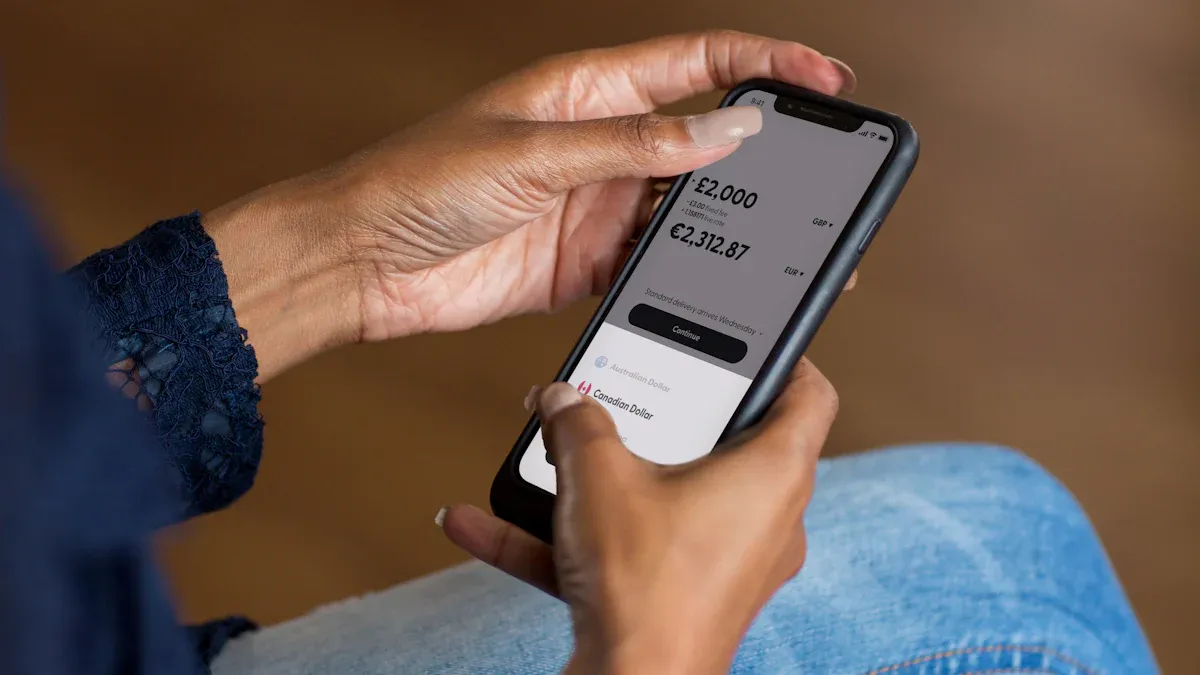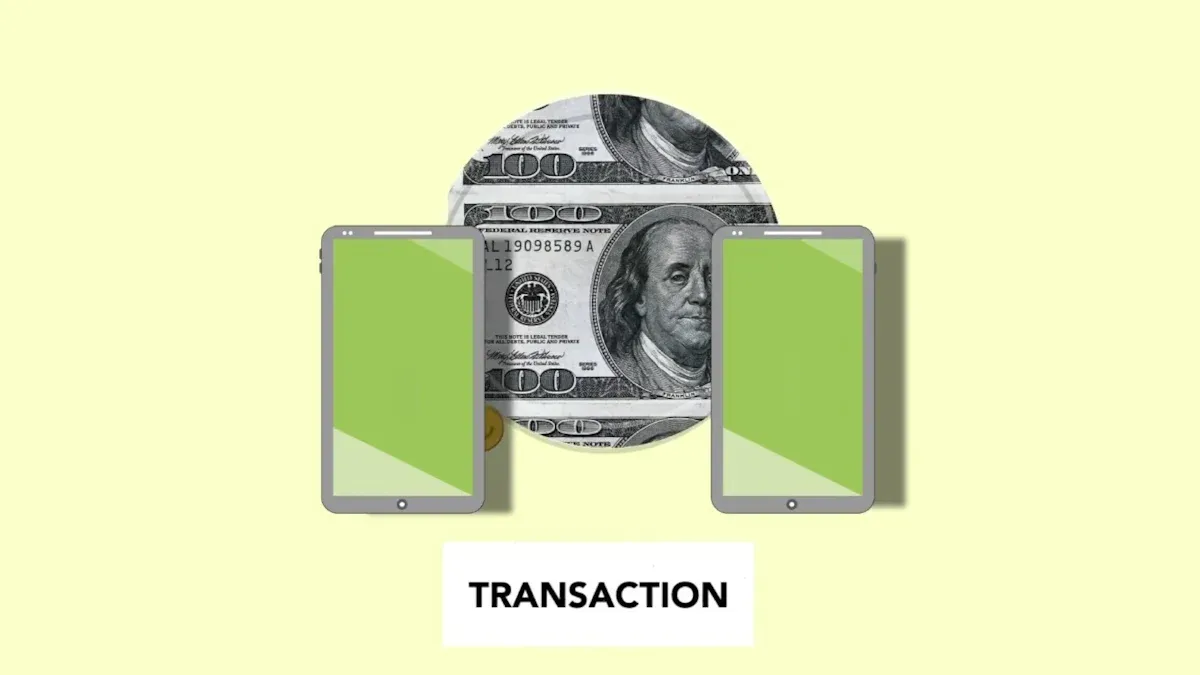- EasyCard
- Trade
- Help
- Announcement
- Academy
- SWIFT Code
- Iban Number
- Referral
- Customer Service
- Blog
- Creator
How to Securely Transfer Funds from One Credit Card to Another

Image Source: unsplash
Have you ever thought about transferring funds from one credit card to another? First, you need to understand a core fact: credit cards cannot transfer funds directly like bank accounts.
However, you can achieve a similar “funds transfer” purpose through some indirect methods. These methods differ greatly in terms of safety, cost, and operation process. So, how can you transfer funds safely? Which method is most suitable for your financial situation? Keep reading, this article will provide you with clear answers and important risk warnings.
Key Points
- Credit cards cannot transfer funds directly, but you can transfer funds through other methods.
- Credit card balance transfer is a safe method recognized by banks, which can help you save interest.
- Transferring funds through third-party platforms is very dangerous, as it is an illegal credit card cash-out behavior.
- Using credit card cash advance to repay has a high cost, as it charges fees and high interest.
- For your fund safety, please choose the bank’s official balance transfer service.
Credit Card Balance Transfer

Image Source: pexels
If you are looking for a way to transfer funds safely, then credit card balance transfer is the only compliant method officially recognized by banks. Many banks offer this reliable transfer service to help you consolidate debt and save interest.
What is Balance Transfer?
Balance Transfer is essentially a debt transfer service. When you apply for a credit card from a new bank (Bank B), you can simultaneously apply to transfer the debt on another credit card (Bank A) to this new card.
Simply put, you are not transferring “cash,” but transferring “debt.” The main purpose of doing this is to utilize the lower interest rate provided by Bank B, or even the 0% interest-free promotional period, to reduce your repayment pressure.
For example, some licensed banks in Hong Kong offer such plans to help customers pay off all old card bills with a new loan, thereby effectively reducing interest expenses.
Operation Steps and Arrival Time
Operating a balance transfer usually follows the following process:
- Research and Apply: Look for credit cards that offer low-interest or zero-interest balance transfer promotions. You can find details on the bank’s official website or through customer service, then submit an application.
- Provide Old Card Information: During the application process, you need to provide the old credit card account you wish to transfer the debt from and the amount to be transferred.
- Wait for Bank Processing: Bank B will review your application. Once approved, it will directly pay Bank A to clear your old debt.
Note: Fund arrival is not instant. The entire process may take several business days or even longer. During this period, you should continue to repay the minimum amount on the old card on time to avoid overdue records.
Fees, Risks, and Precautions
Before deciding to use balance transfer, you must clearly understand its potential costs and risks.
| Item | Description | What You Need to Note |
|---|---|---|
| Handling Fee | Even with 0% interest promotions, banks usually charge a one-time handling fee, generally 3%-5% of the transfer amount. | If you transfer $5,000, you may need to pay a $150-$250 handling fee. |
| Promotional Period | 0% or low interest is only valid for a specific period (such as 6-18 months). | After the promotional period ends, the interest rate will revert to a higher standard annual rate. |
| Credit Impact | Applying for a new credit card will generate a hard inquiry, which may slightly affect your credit score in the short term. | Avoid applying for multiple credit cards frequently in a short period. |
Risks of Third-Party Platform Operations
Unlike the bank’s official balance transfer, transferring funds through third-party platforms is the most unsafe method. This operation is essentially an illegal credit card cash-out, which will expose you to huge financial and legal risks. Some claim that “transferring between credit cards is simple and safe,” which is extremely misleading and absolutely does not apply to such illegal operations.
Operation Principle and Cash-Out Nature
The core of this method is to create fake transactions. The operation principle is as follows:
- You make a fictitious purchase through a third-party platform or merchant and pay with credit card A.
- The platform or merchant deducts a certain percentage of the “handling fee” and then returns the remaining cash to you.
- You then use this cash to repay the debt on credit card B.
This entire process is typical credit card cash-out. You are not transferring funds, but using the credit card’s spending limit to obtain cash fraudulently. This seriously violates the bank’s credit card usage agreement.
Potential Process and Immediate Warnings
You may see some services online that claim to “safely withdraw cash” or “lossless transfer.” Their processes seem simple, but every step is full of traps.
Immediate Warning:
- Information Leakage: You need to provide these unknown platforms with your credit card number, expiration date, and security code. Your personal information and financial security will be completely exposed.
- Funds Fraud: These platforms are likely scams. After you “pay,” the other party may disappear directly, leaving you with a swiped card and no money received.
- High Fees: Cash-out handling fees are much higher than normal transactions, sometimes up to 10% or more. For example, cashing out $2,000 may cost you $200.
Legal and Credit Dual Risks
Do not underestimate the serious consequences of credit card cash-out. You will face both credit and legal double blows.
- Credit Risk: Banks have advanced risk monitoring systems that can easily identify abnormal cash-out behaviors. Once discovered, the bank has the right to immediately reduce your credit limit, freeze, or even cancel your credit card. This will leave an indelible stain on your credit report.
- Legal Risk: In many countries and regions (such as mainland China), using credit cards for large-amount cash-out is illegal. Once identified as malicious overdraft or illegal operation, you may need to bear corresponding legal responsibilities.
In short, for fund safety and personal credit, you should resolutely eliminate any form of credit card cash-out behavior.
The High Cost of Credit Card Cash Advance Repayment

Image Source: unsplash
In addition to the above two methods, you may also think of a seemingly most direct way: withdraw cash from credit card A and then use this cash to repay credit card B. This is like treating the credit card as a “cash advance machine.” Although the operation is simple, you will pay an extremely high price for it.
Operation Steps Explanation
The operation process of credit card cash advance is very direct.
- Find a Machine: You just need to find an ATM that supports your credit card network (such as UnionPay, Visa, MasterCard). In mainland China, most ATMs support these cards.
- Insert the Card: Insert your credit card A.
- Enter Password: Enter the correct payment password (PIN code).
- Withdraw Cash: Select the withdrawal amount. Note that ATMs usually have a single withdrawal limit, for example, up to 2,500 RMB per transaction.
- Deposit for Repayment: After getting the cash, you then deposit it into your bank account through a bank counter or deposit machine to repay the debt on credit card B.
High Cost Analysis
The convenience of this method comes with astonishing costs. Your expenses mainly come from two aspects: handling fees and interest.
Important Reminder: Credit card cash advances have no grace period. Interest starts calculating from the moment you withdraw cash, accumulating daily until you repay the full debt.
| Fee Type | Description |
|---|---|
| Cash Advance Fee | The bank will charge a one-time fee for each cash advance, usually 1%-3% of the cash advance amount. |
| High Daily Interest | The annual percentage rate (APR) for cash advances is much higher than regular purchases, possibly close to 30%. Interest will be calculated from the day of the cash advance. |
For example, if you withdraw $1,000 in cash, you may immediately have to pay a $10-$30 handling fee. At the same time, this $1,000 debt will immediately start accruing interest at a very high rate, increasing your debt every day.
Why Should You Avoid This Method?
Overall, credit card cash advance repayment is an option you should strongly avoid.
- Excessive Cost: Handling fees and immediate high interest will make your debt worse.
- Credit Impact: Frequent or large-amount credit card cash advances may be seen by the bank as a sign of poor financial condition, thus negatively affecting your credit evaluation.
Unless you are facing an extreme emergency that cannot be resolved by any other means, do not consider using credit card cash advances to “transfer” funds. Compared with compliant balance transfers, this is an economically unviable and credit-damaging choice.
Summary: Comparison and Recommendations of Different Methods
Now you have learned about three different “funds transfer” methods. To help you make the wisest decision, let’s do a clear summary and comparison.
Comprehensive Comparison of Safety and Cost
The table below visually shows the huge differences in key dimensions among the three methods.
| Method | Safety | Cost | Bank Recognition |
|---|---|---|---|
| Balance Transfer | High | Lower (one-time handling fee) | Officially Recognized |
| Third-Party Platform | Extremely Low | Extremely High (high handling fee) | Illegal/Illicit |
| Credit Card Cash Advance | Medium | Extremely High (handling fee + daily interest) | Not Recommended |
How to Safely Transfer Funds: Final Recommendations
Overall, credit card balance transfer is your only recommended choice for safely transferring funds. It is not only compliant but can also help you effectively save interest. When choosing balance transfer, you should prioritize products that offer a longer 0% interest promotional period, which will give you more time to pay off the debt.
The People’s Bank of China has pointed out that some families use consumer loans due to heavy spending burdens. If you are also facing similar pressure, you should choose formal channels to manage debt. Remember, debt does not disappear out of thin air, and banks will fully pursue personal loans.
Therefore, making good use of the compliant tools provided by banks is the correct way to manage finances.
Safe Operation Checklist
Before you decide to operate, please use the following checklist for a final check to ensure you can transfer funds safely:
- Prioritize Official Channels: Only consider balance transfer services provided by banks.
- Beware of Suspicious Services: Reject any third-party platforms that require you to pay fees in advance or claim to offer “lossless cash-out.”
- Compare Promotional Terms: Carefully compare the promotional periods, handling fees, and post-period interest rates of different banks. 3% handling fee is a common standard.
- Formulate a Repayment Plan: Ensure you have a clear plan to pay off most or all of the debt before the 0% interest promotional period ends.
- Check Your Credit Score: Understand your credit status before applying and choose the credit card most likely to be approved.
- Continue Paying the Old Card: Continue paying the minimum amount on the old card before confirming that the balance transfer has successfully arrived to avoid overdue payments.
The conclusion of the article is very clear: among all methods, credit card balance transfer is the only officially recognized and relatively economical choice. You should firmly avoid cashing out through third-party platforms or direct cash advances, as these high-risk operations will seriously damage your finances and credit.
To safely transfer funds, please remember this final checklist:
- Stick to Official Channels: Only trust services provided by banks.
- Read Terms Carefully: Carefully check all fees and interest rates.
- Beware of Lies: Reject any non-official services that claim “lossless transfer.”
The number of complaints in China’s financial consumer sector is huge, which warns you to act cautiously and protect your legitimate rights and interests.
FAQ
Will balance transfer damage my credit score?
Applying for a new card will generate a hard inquiry, which may slightly affect your credit score in the short term. But as long as you repay on time, successfully managing debt will help improve your long-term credit health.
What should I do if my balance transfer application is rejected?
If the application is rejected, you can contact the bank to understand the reason. Usually, you can first work to reduce existing debt or improve your income situation, wait for a period, and then try applying again.
Can I use balance transfer to get cash?
No. Balance transfer is a direct debt transfer between banks, and the funds will not enter your personal account. It is a debt management tool, not a way to obtain cash. Any service that claims to help you cash out carries risks.
Do all banks offer 0% interest balance transfers?
Not all banks offer this service, and the promotional terms vary. You need to actively research and compare different bank products, paying attention to the following points:
- 0% interest promotional period
- One-time handling fee (for example, 3%-5% of the transfer amount)
- Standard interest rate after the promotional period ends
Through this comprehensive analysis of credit card fund transfers, we’ve seen how balance transfers serve as the official compliant path, effectively sidestepping legal risks and high fees (up to 10%) from third-party cash-outs, plus immediate high-interest burdens (30%+ APR) from withdrawals—ideal for debt consolidation. Yet, for more flexible cross-card flows, global multi-currency swaps, or digital asset bridging, a specialized digital wallet platform delivers a safer, more cost-effective all-in-one solution, eliminating traditional banks’ limits and cumbersome reviews. BiyaPay, designed for modern finance users, enables instant conversions between over 30 fiat currencies and 200+ cryptocurrencies, with built-in real-time exchange rate queries and tools for markup-free, precise transparency.
Just register quickly to unlock remittance fees as low as 0.5%, covering most countries worldwide with same-day delivery speeds. This beats credit card transfer’s 3%-5% fees and wait times, backed by bank-grade encryption, multi-factor authentication, and real-time tracking for worry-free security. Whether streamlining personal debts, supporting overseas family, or handling business settlements, BiyaPay’s unlimited limits and 24/7 access lock in optimal rates, dodge market volatility, and maximize fund growth.
Start your smart finance journey now! Visit the real-time exchange rate query to check current rates and create your free account. Choose BiyaPay to make credit card fund transfers simple, secure, and efficient—step into a seamless era of global asset management.
*This article is provided for general information purposes and does not constitute legal, tax or other professional advice from BiyaPay or its subsidiaries and its affiliates, and it is not intended as a substitute for obtaining advice from a financial advisor or any other professional.
We make no representations, warranties or warranties, express or implied, as to the accuracy, completeness or timeliness of the contents of this publication.




Contact Us
Company and Team
BiyaPay Products
Customer Services
is a broker-dealer registered with the U.S. Securities and Exchange Commission (SEC) (No.: 802-127417), member of the Financial Industry Regulatory Authority (FINRA) (CRD: 325027), member of the Securities Investor Protection Corporation (SIPC), and regulated by FINRA and SEC.
registered with the US Financial Crimes Enforcement Network (FinCEN), as a Money Services Business (MSB), registration number: 31000218637349, and regulated by FinCEN.
registered as Financial Service Provider (FSP number: FSP1007221) in New Zealand, and is a member of the Financial Dispute Resolution Scheme, a New Zealand independent dispute resolution service provider.



















